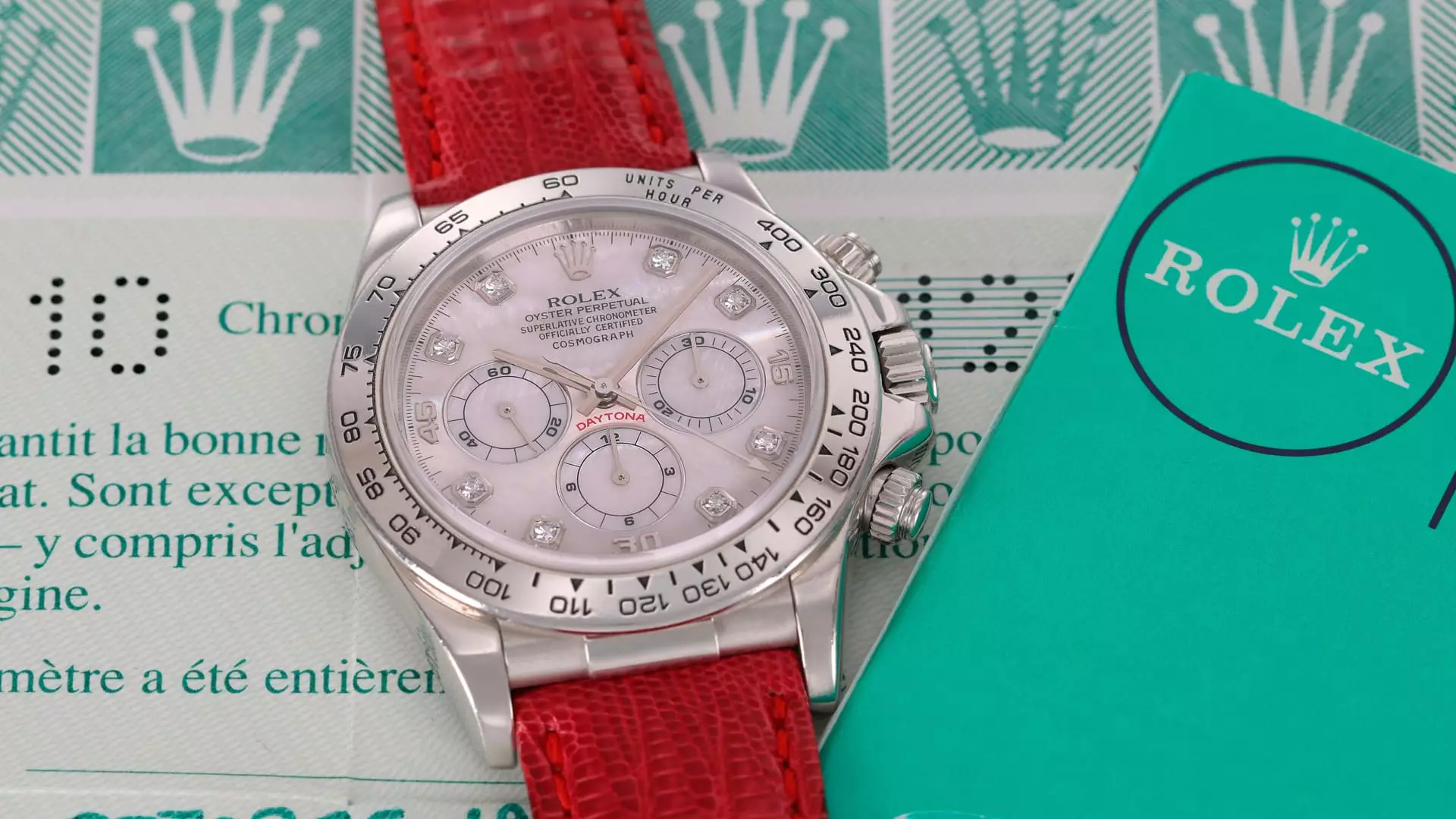The world of luxury watches often resembles a tightly-knit community, governed by tradition and exclusivity. In this realm, a shiny 1999 platinum Rolex Daytona is about to burst through the confines of the ordinary, fetching potentially up to $1.7 million at a Sotheby’s auction in Geneva. This is not just any timepiece; it is a story of rarity intertwined with opulence. Rolex, a brand that has long been synonymous with craftsmanship and prestige, rarely ventures into custom commissions. The very fact that this platinum Daytona exists is as extraordinary as the watch’s price tag. It serves as a testament to an era when individual client requests were a whisper of possibilities, not the standard operating procedure.
Pegged against the backdrop of a luxury market now defined by robust customization, it’s a stark reminder that, sometimes, less truly is more. The allure of exclusivity certainly heightens when you consider that this is one of only four models ever commissioned for the same family, each with its own unique dial. The soul of craftsmanship pulsates vibrantly within this watch, inviting its potential owner into a world where individuality reigns and luxury is on a personal level.
Rolex’s Secrecy: A Double-Edged Sword
Rolex has built its empire on a foundation of secrecy, a strategic decision that serves to enhance its brand allure. Pedro Reiser, a senior watch specialist at Sotheby’s, astutely notes how uncommon it is to see commissioned pieces emerge from the Rolex treasure chest. This characteristic of the brand contributes to the mystique surrounding the platinum Daytona heading to auction. In a marketplace where many brands, including those vying for Rolex’s luxury status, indulge in customization, Rolex’s tight-lipped practices elevate the prestige of their unique pieces.
However, this secrecy is also a double-edged sword. Consumers today are not just looking for a beautiful watch; they are seeking a narrative, an engaging story that enhances their ownership experience. Rumors of the previous CEO Patrick Heiniger wearing a similar timepiece might add flavor, yet there remains an absence of confirmed links to this particular model. In a world overflowing with information, Rolex’s penchant for veiling its operations can appear elitist, and that may not sit well with the new generation of affluent buyers who favor transparency and authenticity.
A Market Shift: Watches as Investment Assets
In recent years, luxury watches have seen a transformative shift from mere status-symbols to reliable investment vehicles. The recent Knight Frank index illustrates this, showing a staggering growth rate of over 125% in watch valuations in the last decade. Wealthy collectors and a surge of younger buyers are gradually redefining the landscape, transitioning watches from an accessory to a prized asset. The demand for unique pieces like the platinum Daytona makes economic sense in a market that is becoming increasingly competitive.
What this means, however, is that the traditional watch-buying demographic is evolving. The old guard — those who once viewed a watch purely for its aesthetic— finds itself competing with a new wave of buyers who see these pieces as imperfect yet highly rewarding investments. The cool-breath of this trend might signify a makeover in how the watch industry presents its offerings to the public. Brands would do well to recognize that the potential for investment returns should be as significant a selling point as the impeccable craftsmanship they tout.
The Role of Digital Age Connectivity
With growing interest in luxury watches comes the desire for connectivity, particularly among the younger generation keen on social media. Rare timepieces are no longer just objects but portals to virtual communities rich with information and enthusiastic collectors. Auction platforms, like Sotheby’s, have begun to embrace this new reality, promoting not just the sale of objects but experiences tied to them.
In the digital age, a watch can signify membership in an elite community, showcasing individual taste and financial prowess. The godfather of luxury—Rolex—is no exception, and the imminent auction of this platinum Daytona stands as a beacon calling for modern buyers to join this new intersection of luxury and connectivity. The plate is set for what could well be a transformative moment in the history of watch collecting.
The mystery, rarity, and historical significance of the 1999 platinum Rolex Daytona culminate in its astounding auction value. As the market trends towards individualism and investment, this remarkable piece is positioned to grasp the interests of a diverse group of collectors, transforming it from mere ornamentation into a portrait of personal legacy. It’s not just a watch; it’s a symbol of what the future of luxury collecting can become.

